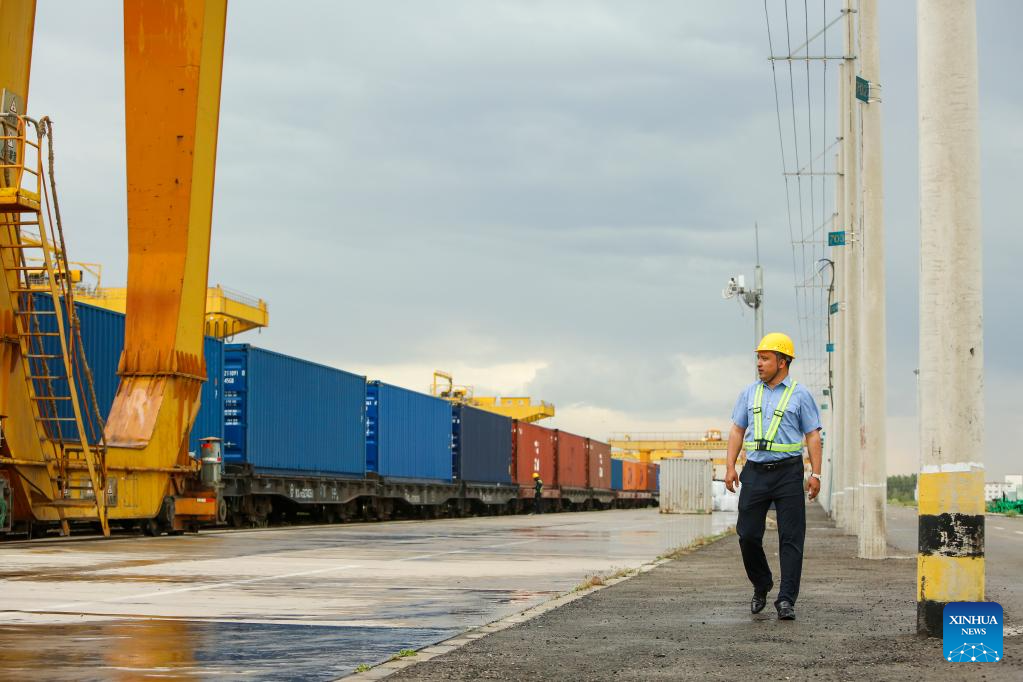
Hemit Turhan assigns tasks to staff members at the Horgos railway port in Horgos, northwest China's Xinjiang Uygur Autonomous Region, May 14, 2023. (Xinhua/Zhao Ge)
URUMQI, July 3 (Xinhua) -- With a long whistle, a train chugs into the Horgos railway port, where Hemit Turhan directs a gantry crane to prepare to unload the cargo.
The 34-year-old man from northwest China's Xinjiang Uygur Autonomous Region has been working at the port, which borders Kazakhstan, for about 10 years, during which time he has witnessed the great changes brought by cross-border trains.
"Since May, I have felt the frequency of China-Europe freight trains is increasing," he said.
The drive from Hemit Turhan's hometown of Yining City to Horgos is about an hour and a half. He graduated from Lanzhou Jiaotong University in 2013, the same year that the Belt and Road Initiative was proposed. Knowing that more talent would be needed, he applied for a job at the port.
He had worked as cargo courier and dispatcher before being placed in charge of loading and unloading cross-border freight.
While busy working in the rain, Hemit Turhan told Xinhua that safety is paramount at the port. Every day he walks as many as 40,000 steps on his inspections.
"In the past decade, the goods carried by the trains have changed," he said, noting that imports from Central Asian countries used to be mainly industrial products, but now they are snacks like cookies and candies, which are becoming increasingly popular among locals.
As of the end of April, the China-Europe freight train services depart from 109 domestic cities, providing links to 211 cities in 25 European countries.
The number of China-Europe freight train trips increased by 17 percent year on year to 5,611 in the first four months of 2023, according to the China State Railway Group Co., Ltd in May. During this period, the Horgos railway port handled 2,485 China-Europe freight trains, up 14.8 percent.
In 2016, Horgos saw a daily average of less than two China-Europe freight train trips. That number has grown to 20 today.
And workers at the port have benefitted in the process.
Each day, crane driver Tohmedhe and his colleagues can handle more than 1,000 containers, compared with a few hundred a couple of years ago.
"Now I can earn more than 10,000 yuan (about 1,386 U.S. dollars) a month, up from just a few thousand in the past," the 29-year-old man said. "I am sure that the cross-border trade will increase further."
But Hemit Turhan, who has had a similar experience, said that the money was not the only reason he loved his job.
"Seeing the railway becoming busier and busier, and the trains carrying products from different countries to various destinations, I feel really, really proud," he said. ■

Hemit Turhan patrols along the Horgos railway port in Horgos, northwest China's Xinjiang Uygur Autonomous Region, May 14, 2023. (Xinhua/Hao Zhao)



